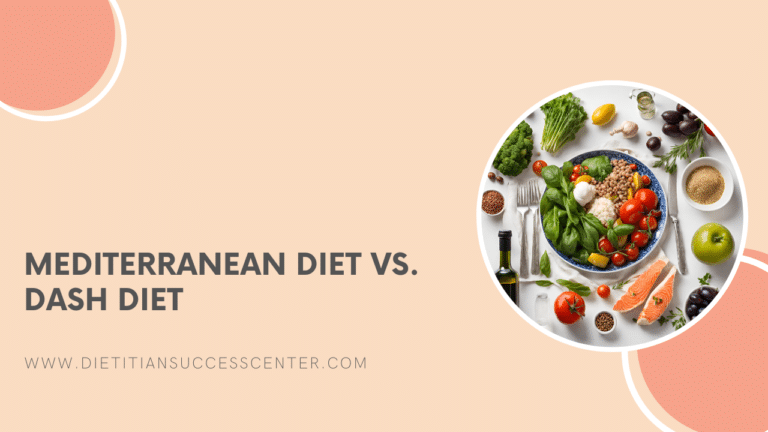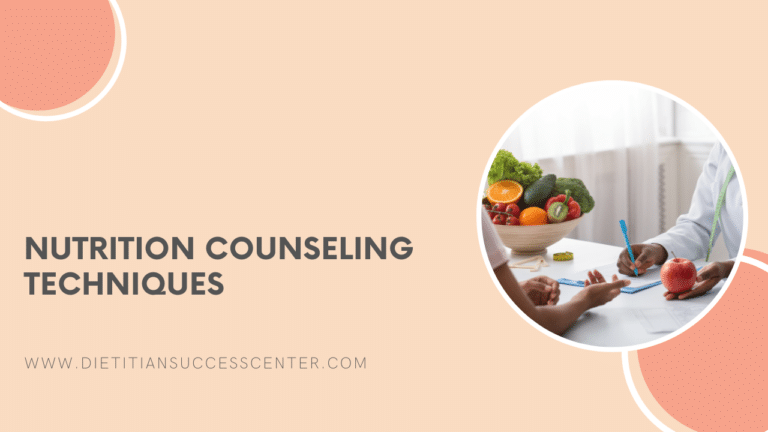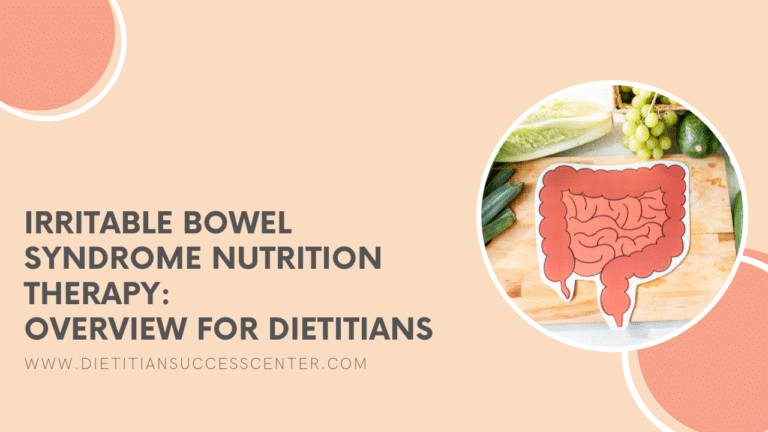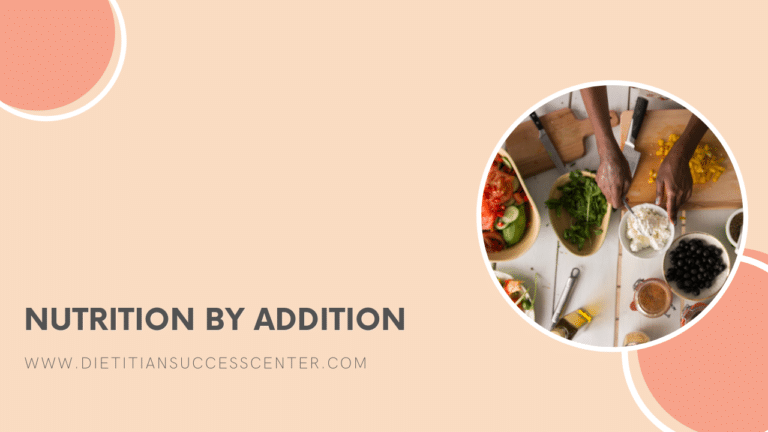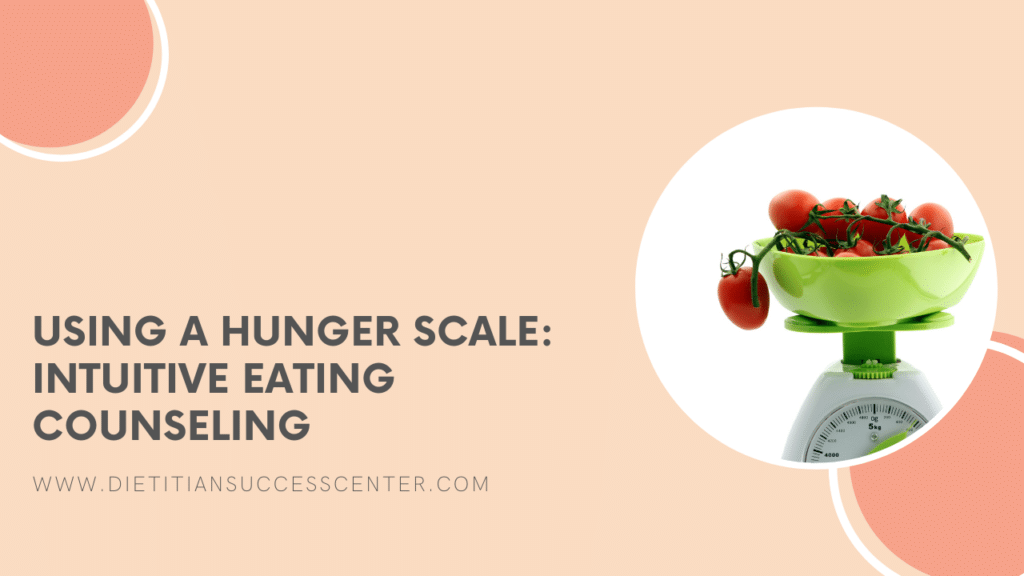

Written by Olivia Farrow, RD, MHSc
Reviewed by Maria Dellanina, RDN
As a health professional, are you looking to support your clients in building healthy relationships with food and their bodies? An intuitive eating hunger scale can be a helpful tool for counseling clients on intuitive eating and listening to their body’s internal cues for hunger and fullness. In this article, we will explore what a hunger scale is and how to use it in practice.
Intuitive eating is a concept developed by the dietitians, Evelyn Tribole and Elyse Resch (1).
Learn more about intuitive eating, build your intuitive eating counseling skills, and get access to DSC’s intuitive eating video course and intuitive eating worksheets by becoming a member of Dietitian Success Center.
What is Intuitive Eating?
Intuitive eating is a concept developed by the dietitians, Evelyn Tribole and Elyse Resch (1).
Intuitive eating is an approach to food and nutrition that emphasizes tuning in to the body’s natural hunger and fullness cues rather than following strict diets. It involves cultivating a positive and non-judgmental relationship with food, honoring your cravings and preferences, and being mindful of how different foods make you feel.
It also involves paying attention to emotional and environmental factors affecting your eating habits, such as emotions or social situations. Ultimately, intuitive eating aims to promote physical and mental well-being, as well as a healthy and sustainable relationship with food.
With intuitive eating, the individual pays attention to their internal cues for guidance. The key features of intuitive eating include unconditional permission to eat, eating for physical reasons rather than emotional ones, and relying on inner hunger and fullness cues to determine how often, when, and how much to eat (1).
What is a Hunger Scale?
Put simply, an intuitive eating hunger scale, like the one included in our FREE Nutrition Client Resource Kit, is a tool to measure how hungry or full a person is.
The scale ranges from 1 to 10, with one being painfully hungry or “starving” and ten being painfully full or stuffed.

A hunger scale aims to help individuals tune in to their body’s signals and eat in response to their needs rather than external cues such as emotions or social situations.
Research suggests that following internal hunger and fullness cues rather than external cues (such as emotional eating, eating due to the presence of food, and eating based on the portion offered) may improve long-term eating behaviors and patterns (2,3).
How To Use a Hunger Scale for Intuitive Eating Counseling?
One of the principles of intuitive eating is “Honor Your Hunger” (1). This principle asks the individual to reconnect with internal hunger cues and discover pleasant versus unpleasant hunger for them. Ignoring hunger cues often leads to an increased primal drive to overeat. Individuals can be encouraged to always answer the call to eat so the body has adequate energy.
Clients often have a hard time answering what pleasant hunger might feel like. A hunger scale can help with this.
You can explore with clients:
-
- What their drive to eat is at various times.
-
- What their drive to eat is like at various levels of hunger.
-
- Normalizing overeating when they’ve reached primal hunger, the most desperate level of hunger.
-
- Working towards eating during a more pleasant hunger level (like when it feels like they’re looking forward to a meal).
Keep in mind a lot of chronic dieters will look for their hunger as permission to eat. They may actually find primal hunger appealing in that sense, but ultimately we want to help them to recognize that how they feel is what’s really important.

Key Takeaways: Hunger Scale Intuitive Eating Counseling
-
- Using a hunger scale for intuitive eating can be a powerful tool in helping clients develop a healthier relationship with food.
-
- By tuning in to their body’s signals, clients can learn to eat in response to their needs, rather than external cues.
-
- As a health professional, you can use a hunger scale to assess your client’s current state, encourage mindful eating, and teach them to recognize the early signs of hunger and fullness.
-
- With consistent practice, your clients can develop a healthy relationship with food and achieve their health and wellness goals.
References
- Tribole, E., & Resch, E. (2012). “Intuitive eating: A revolutionary program that works.” New York, NY: St. Martin’s Press.
- Wansink, Brian et al. “Internal and external cues of meal cessation: the French paradox redux?.” Obesity (Silver Spring, Md.) vol. 15,12 (2007): 2920-4. doi:10.1038/oby.2007.348
- French SA, Epstein LH, Jeffery RW, Blundell JE, Wardle J. Eating behavior dimensions. Associations with energy intake and body weight. A review. Appetite. 2012 Oct;59(2):541-9. doi: 10.1016/j.appet.2012.07.001. Epub 2012 Jul 11. PMID: 22796186; PMCID: PMC3454469.


